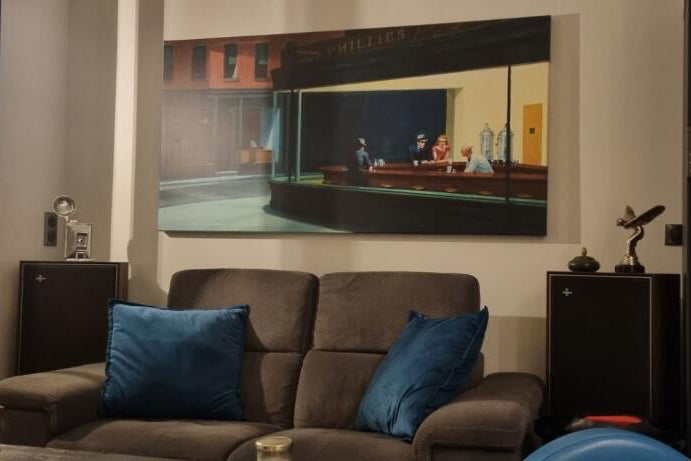Art print | At the Madeleine Tea Fin de jour - Jacques-Émile Blanche


View from behind

Frame (optional)
In the fascinating world of French painting from the early 20th century, "Au thé de la Madeleine Fin du jour" by Jacques-Émile Blanche stands out for its delicacy and intimate atmosphere. This artwork, which captures a suspended moment in time, evokes the sweetness of encounters and the magic of shared moments. The scene takes place in a Parisian salon, where the twilight light filters through the windows, creating a warm and melancholic ambiance. The characters, engaged in a hushed conversation, seem to embody the spirit of an era where the art of living blends with art itself. The art print of this piece allows you to relive this aesthetic experience daily, transforming a simple wall into a window open to a charming world.
Style and uniqueness of the work
Jacques-Émile Blanche's style is characterized by meticulous attention to detail and a subtly nuanced color palette. In "Au thé de la Madeleine Fin du jour," warm and golden hues evoke twilight, while delicate shadows add depth to the composition. The way the artist plays with light and space creates a sense of proximity and intimacy, as if one is personally invited to this conversation. The faces of the characters, painted with remarkable precision, express a range of emotions that invite the viewer to ponder their thoughts and stories. This artwork is not just a visual representation but also an invitation to feel and imagine, making each gaze a journey into the heart of human relationships.
The artist and his influence
Jacques-Émile Blanche, an emblematic figure of the Impressionist movement, managed to forge a unique artistic identity within a rich and varied panorama. Raised in an artistic environment, he mingled with figures such as Marcel Proust and Claude Monet, which profoundly influenced his approach to painting. His work is distinguished by a fusion of styles, blending realism with an Impressionist touch, while incorporating elements of portrait and genre painting. Blanche was also a privileged witness of Parisian society of his time, and his canvases reflect the customs and aspirations

Matte finish

View from behind

Frame (optional)
In the fascinating world of French painting from the early 20th century, "Au thé de la Madeleine Fin du jour" by Jacques-Émile Blanche stands out for its delicacy and intimate atmosphere. This artwork, which captures a suspended moment in time, evokes the sweetness of encounters and the magic of shared moments. The scene takes place in a Parisian salon, where the twilight light filters through the windows, creating a warm and melancholic ambiance. The characters, engaged in a hushed conversation, seem to embody the spirit of an era where the art of living blends with art itself. The art print of this piece allows you to relive this aesthetic experience daily, transforming a simple wall into a window open to a charming world.
Style and uniqueness of the work
Jacques-Émile Blanche's style is characterized by meticulous attention to detail and a subtly nuanced color palette. In "Au thé de la Madeleine Fin du jour," warm and golden hues evoke twilight, while delicate shadows add depth to the composition. The way the artist plays with light and space creates a sense of proximity and intimacy, as if one is personally invited to this conversation. The faces of the characters, painted with remarkable precision, express a range of emotions that invite the viewer to ponder their thoughts and stories. This artwork is not just a visual representation but also an invitation to feel and imagine, making each gaze a journey into the heart of human relationships.
The artist and his influence
Jacques-Émile Blanche, an emblematic figure of the Impressionist movement, managed to forge a unique artistic identity within a rich and varied panorama. Raised in an artistic environment, he mingled with figures such as Marcel Proust and Claude Monet, which profoundly influenced his approach to painting. His work is distinguished by a fusion of styles, blending realism with an Impressionist touch, while incorporating elements of portrait and genre painting. Blanche was also a privileged witness of Parisian society of his time, and his canvases reflect the customs and aspirations










